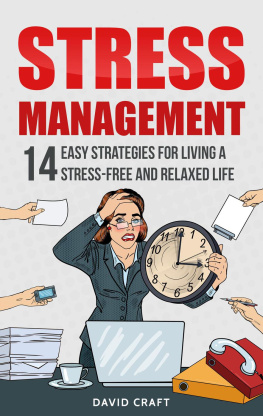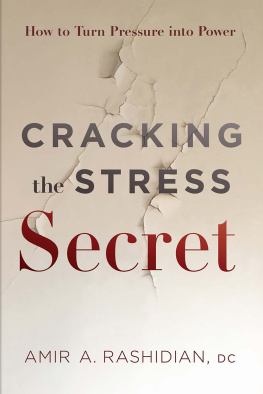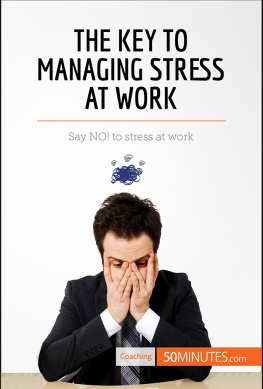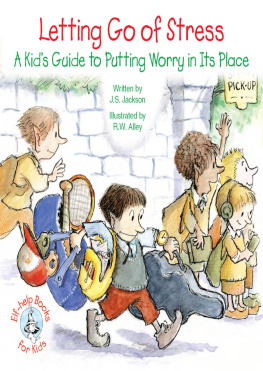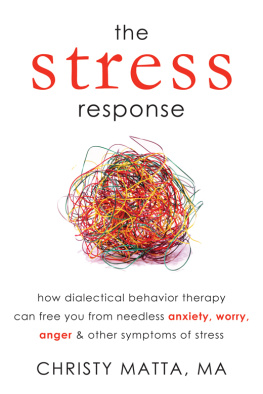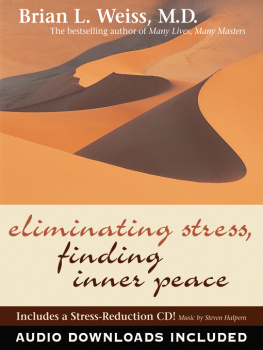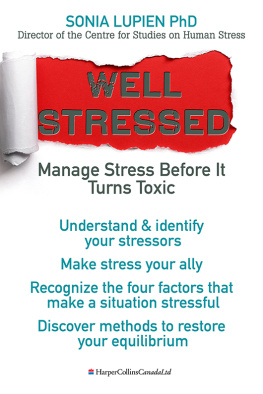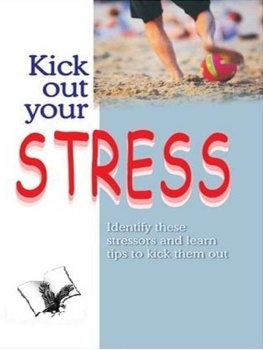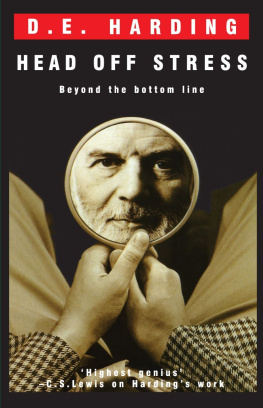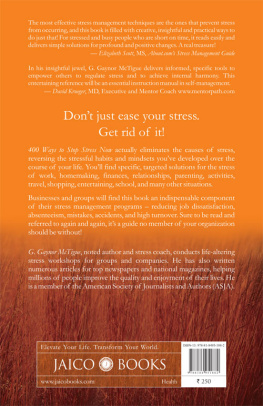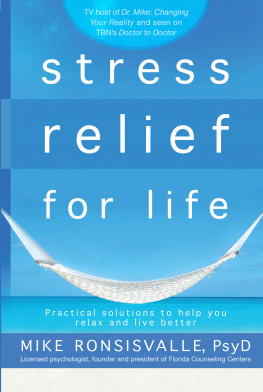10 Steps to Mastering Stress
10 Steps to Mastering Stress
A LIFESTYLE APPROACH
Updated Edition
David H. Barlow, PhD
Ronald M. Rapee, PhD
Sarah Perini, MA


Oxford University Press is a department of the University of Oxford.
It furthers the Universitys objective of excellence in research, scholarship, and education by publishing worldwide.
Oxford New York
Auckland Cape Town Dar es Salaam Hong Kong Karachi
Kuala Lumpur Madrid Melbourne Mexico City Nairobi
New Delhi Shanghai Taipei Toronto
With offices in
Argentina Austria Brazil Chile Czech Republic France Greece
Guatemala Hungary Italy Japan Poland Portugal Singapore
South Korea Switzerland Thailand Turkey Ukraine Vietnam
Oxford is a registered trademark of Oxford University Press in the UK and certain other countries.
Published in the United States of America by
Oxford University Press
198 Madison Avenue, New York, NY 10016
Oxford University Press 2014
All rights reserved. No part of this publication may be reproduced, stored in a retrieval system, or transmitted, in any form or by any means, without the prior permission in writing of Oxford University Press, or as expressly permitted by law, by license, or under terms agreed with the appropriate reproduction rights organization. Inquiries concerning reproduction outside the scope of the above should be sent to the Rights Department, Oxford University Press, at the address above.
You must not circulate this work in any other form and you must impose this same condition on any acquirer.
Library of Congress Cataloging-in-Publication Data
Barlow, David H.
10 steps to mastering stress: a lifestyle approach / David H. Barlow, Ph.D.,
Ronald M. Rapee, Ph.D. Sarah Perini, M.A.Updated edition.
pages cm
ISBN 9780199917532
1. Stress (Psychology) 2. Stress management. I. Rapee, Ronald M.
II. Perini, Sarah. III. Title. IV. Title: Ten steps to mastering stress.
BF575.S75B2958 2014
155.9042dc23
2013028791
1 3 5 7 9 8 6 4 2
Printed in the United States of America
on acid-free paper
From the outside, Joe looked like a classic success story. At age 45, he owned a profitable business, had a beautiful family, and had just built a new home. Inside, however, Joe felt miserable. Although he stayed at work later and later each night, he never seemed to accomplish enough. When he finally arrived home, his head was pounding, and he yelled at his children so often that they began to shy away from him. Nothing made Joe happynot his business, not his family, and, most of all, not himself. Each day brought new irritations, until one day Joe looked around and realized that he was hurting everything and everyone that mattered to him.
Stress was ruining Joes life. He is not alone. Stress is a common problem facing people in todays complex world. You cant see it, hear it, or smell it, yet stress can threaten both your physical health and psychological well-being.
If you are a chronic worrier, if you push yourself toward perfection each day and then punish yourself for all that you have not accomplished, then you are waging your own battle with stress. Perhaps you are irritable and tense most of the time, and your doctor has said that stress is causing your headaches and upset stomach.
Different people react to stress in different ways. Whatever your own response may be, it is important to know one thing: You can learn to master stress and the problems it causes you. Our 10-step program will help you identify what is causing your stress, teach you to relax, and show you how to think more realistically. It will also give you strategies for dealing with the stressful events life can throw at you. You will emerge calmer and more in control. Picking up this book was your first move toward these goals.
The program presented in this book is the result of over three decades of research, first at the Center for Stress and Anxiety Disorders at the State University of New York at Albany and, more recently, at the Center for Anxiety and Related Disorders, Boston University. This is the largest research center of its kind in the world, and, in recent years, researchers at the center have learned more about stress than was ever known before. In Australia, we have continued this research in the Centre for Emotional Health at Macquarie University. Hundreds of people who have come to these clinics for help have followed a program like this one and found themselves much better able to cope with stress.
We have selected four case studies that we will follow throughout the book as they apply each of the 10 steps. These case studies are based on combinations of actual patients we have seen in our clinics. You will see that they have a range of backgrounds and life circumstances, and experience their stress in different ways. Perhaps you will relate to one or more of them. We hope that their examples will illustrate how you can apply our 10 steps to reduce stress in your own life.
WHY MASTER STRESS?
In recent years, we have come to realize just how important controlling stress can be for our well-being. It has become clear that stress can interfere with many parts of our livesstress increases the chance of developing diseases, it increases work absenteeism, it can lead to relationship difficulties and interpersonal strain, and it can increase the risk of turning to artificial relaxation such as drugs and alcohol. On the extreme side, stress increases the risk of developing serious illnesses in the future, and even on the mild side, stress can reduce our enjoyment of life. Stress claims from workers compensation have been on the rise. Stress costs the community vast amounts of money each yearboth from direct medical and legal claims and from indirect costs associated with missed work, divorce, and accidents. So, as you can see, reducing your stress will be of tremendous benefit, not only to you personally, but also to the community as a whole.
WHO IS THIS BOOK FOR?
This book is for people who would like to use effective, research-based techniques to reduce their levels of stress or anxiety. The 10 steps outlined in this book are based on years of psychological research at leading universities. This research has tested the techniques with many people, ranging from those with ordinary, day-to-day stress through to those whose stress is so overwhelming that it is interfering with their ability to relate to their families and friends, accomplish what they need to at work, or generally enjoy life. Regardless of whether your stress is occasional or ongoing, you will likely benefit from implementing the techniques in this book.
This book is NOT for you if:
You are looking for a quick fix solution to your stress that doesn't involve any effort on your part. Simply reading the book will not be effective. For the techniques to work, they must be practiced regularly.
You are currently experiencing clinical depression. Clinical depression is different from the temporary feelings of sadness, flatness, or grief that most people experience from time to time. Clinical depression is a mood disorder that involves persistent feelings of sadness or flatness for most of the day, nearly every day, for a period of two weeks or more. People who are clinically depressed also experience a range of other persistent symptoms, such as ongoing problems with sleep and appetite, disinterest in things they used to enjoy, and feelings of worthlessness. If this sounds like you, we recommend that you seek assistance from your family doctor, psychologist, or psychiatrist without delay. With professional treatment, it is likely that your mood will improve. You will then be in a much better position to work through this book.
Next page

